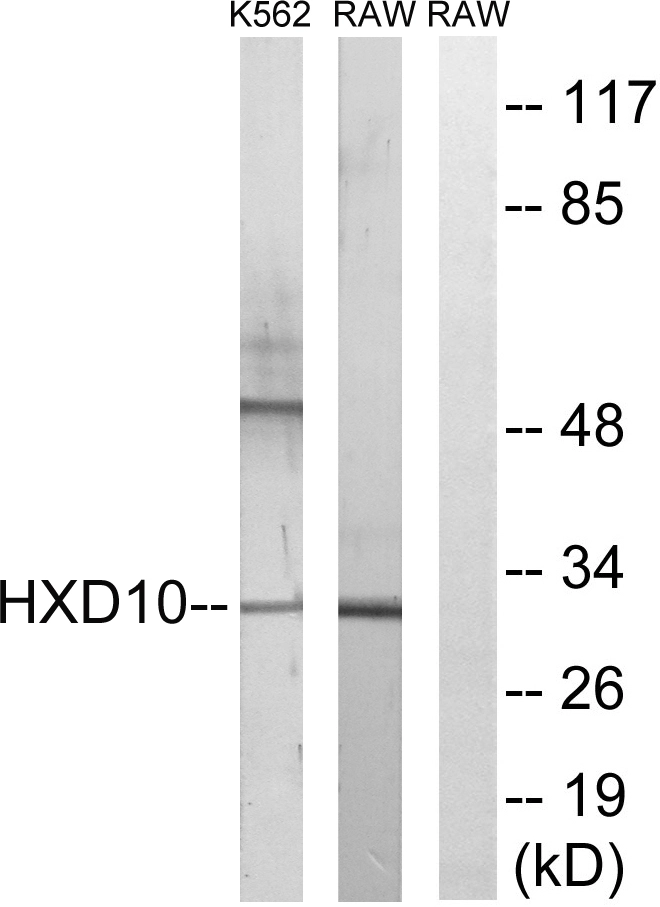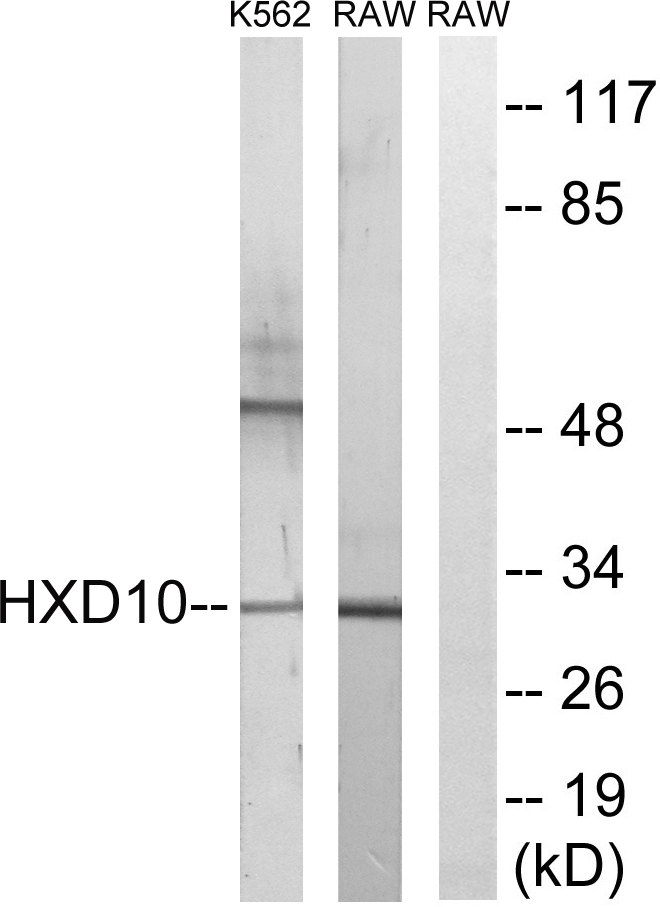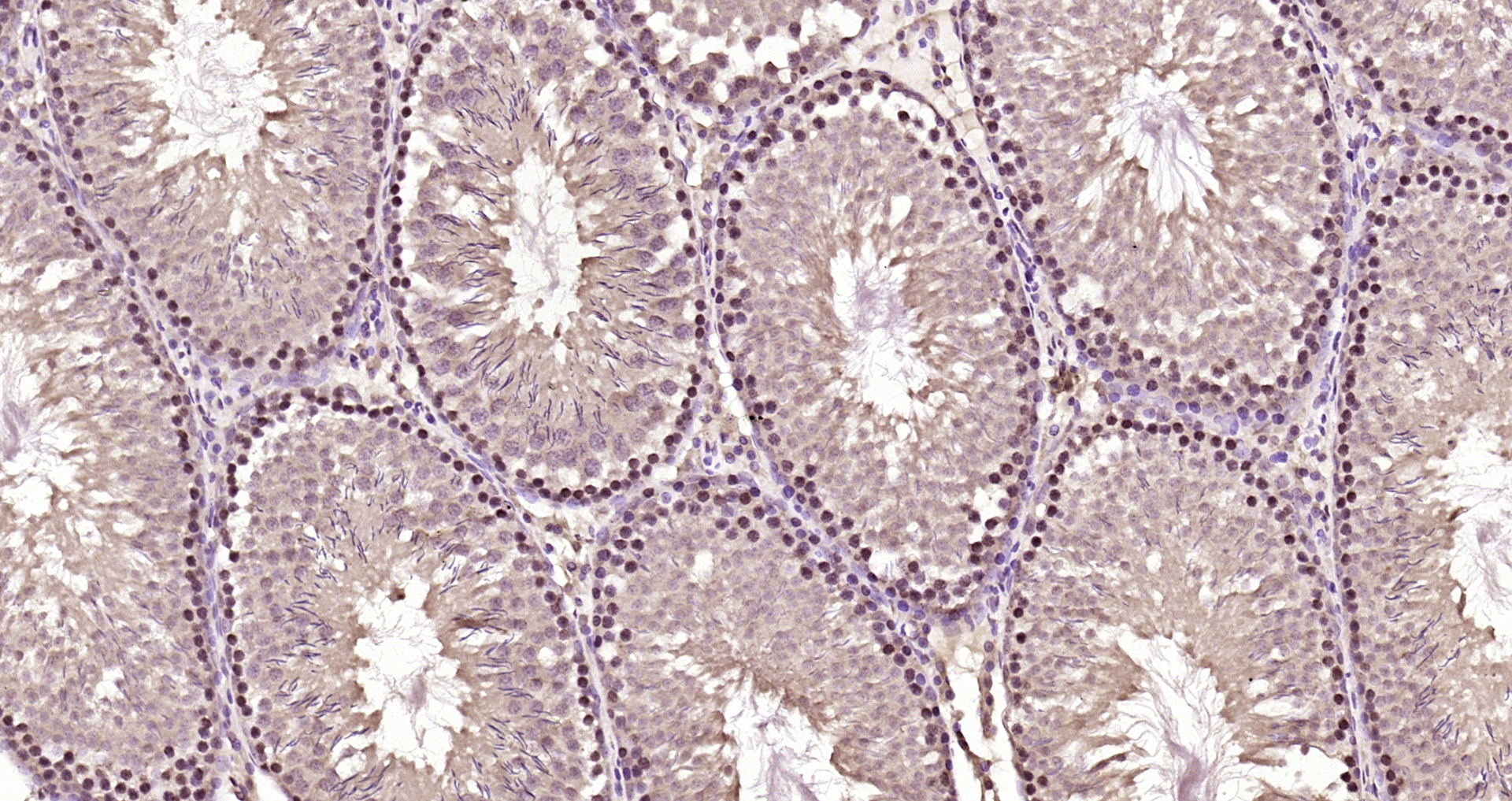
WB analysis of K562 and RAW264.7 cell lysates using GTX87854 HOXD10 antibody. The lane on the right is blocked with the synthesized peptide.
HOXD10 antibody
GTX87854
ApplicationsWestern Blot
Product group Antibodies
TargetHOXD10
Overview
- SupplierGeneTex
- Product NameHOXD10 antibody
- Delivery Days Customer9
- Application Supplier NoteWB: 1:500~1:1000. *Optimal dilutions/concentrations should be determined by the researcher.Not tested in other applications.
- ApplicationsWestern Blot
- CertificationResearch Use Only
- ClonalityPolyclonal
- ConjugateUnconjugated
- Gene ID3236
- Target nameHOXD10
- Target descriptionhomeobox D10
- Target synonymsHOX4, HOX4D, HOX4E, Hox-4.4, homeobox protein Hox-D10, homeo box 4D, homeo box D10, homeobox protein Hox-4D, homeobox protein Hox-4E
- HostRabbit
- IsotypeIgG
- Protein IDP28358
- Protein NameHomeobox protein Hox-D10
- Scientific DescriptionThis gene is a member of the Abd-B homeobox family and encodes a protein with a homeobox DNA-binding domain. It is included in a cluster of homeobox D genes located on chromosome 2. The encoded nuclear protein functions as a sequence-specific transcription factor that is expressed in the developing limb buds and is involved in differentiation and limb development. Mutations in this gene have been associated with Wilms tumor and congenital vertical talus (also known as rocker-bottom foot deformity or congenital convex pes valgus) and/or a foot deformity resembling that seen in Charcot-Marie-Tooth disease. [provided by RefSeq, Jul 2008]
- Storage Instruction-20°C or -80°C,2°C to 8°C
- UNSPSC12352203







